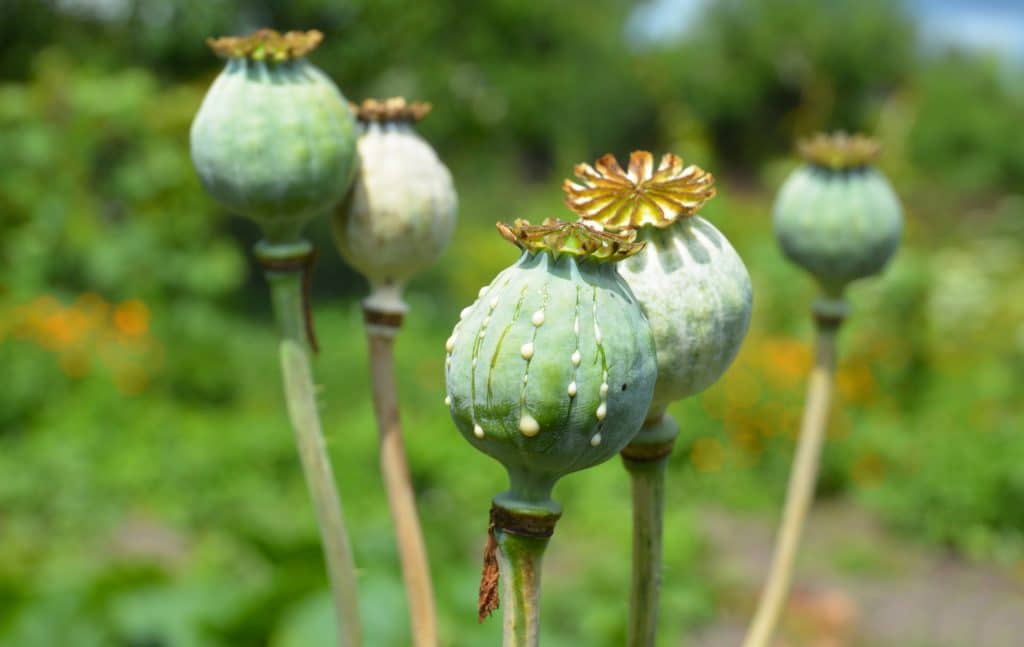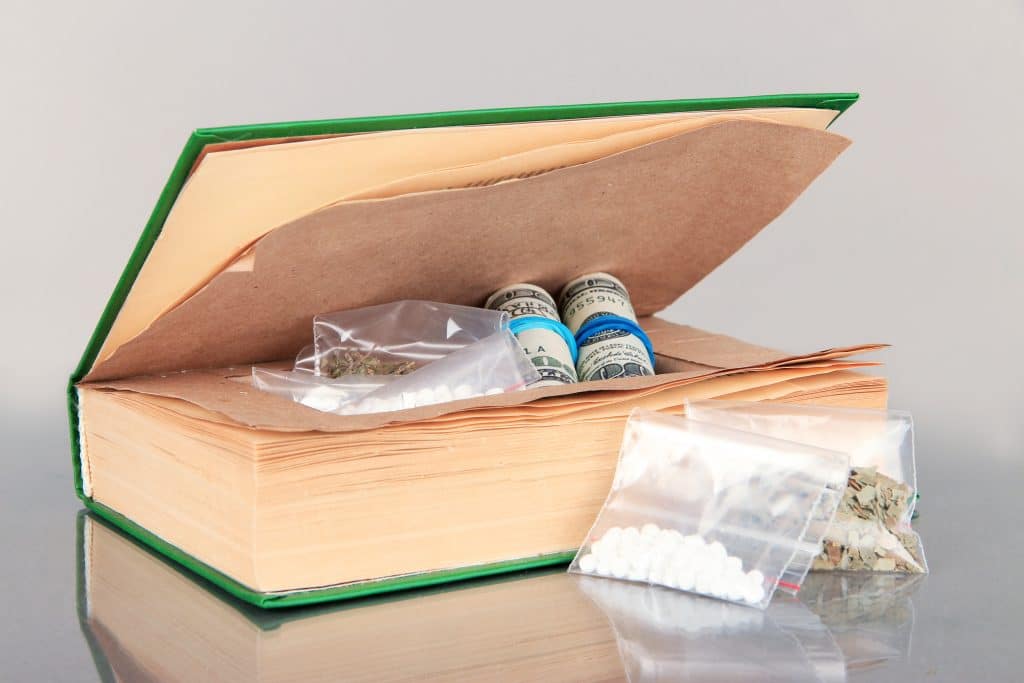Drug smuggling. It is a global phenomenon that has plagued societies for decades, yet many of us don’t actually know what it is or how it works. To put it simply, it is a multi-billion dollar industry that involves the transportation, distribution, and sale of illegal drugs. Smugglers use various methods to move illegal substances across borders, including hiding them in vehicles, shipping containers, and even the human body.
The complexity of drug smuggling operations makes it difficult for law enforcement agencies to apprehend the culprits and curb the flow of illegal drugs. In this article, we will take an in-depth look at how drug smuggling works.
What is Drug Trafficking?
Drug trafficking refers to the illegal transportation, distribution, and sale of illegal drugs. This can include a wide range of drugs such as cocaine, heroin, marijuana, and synthetic drugs like fentanyl. Drug trafficking often involves organized crime networks, who engage in the production, distribution, and sale of drugs, often across international borders.
Regardless of the morality behind it, it is certainly a lucrative business, with estimates suggesting that the global drug trade is worth billions of dollars each year. It is believed to be a 32 billion dollar industry. However, the consequences of drug trafficking can be devastating, fueling violence, corruption, and addiction, and contributing to health problems and social dislocation.
As such, drug trafficking is a serious global problem that requires ongoing efforts to combat. Drug smuggling, essentially the same concept, looks into the specifics of how drug traffickers get their substances across. We’re going to be looking at their methods and how it works.
The History
First let’s look into the history of this phenomenon. Whilst some believe drug trafficking is a recent activity – created by Mafioso-like groups – the truth is that it has been a global problem for centuries. The history of drug trafficking dates back to ancient times, with evidence of opium cultivation and consumption dating back to the Neolithic period in the Mediterranean region.

Over time, the trade of drugs has become increasingly sophisticated, with new drugs and methods of smuggling emerging regularly. Opium has been one of the most commonly trafficked drugs throughout history. In ancient times, opium was used for medicinal purposes and was even considered a cure-all for various ailments. However, as the demand for opium grew, it became a valuable commodity that was traded across borders. The opium trade reached its peak during the 19th century. YAMI 2 writes:
“Drug trafficking was not invented by a mafia but by the European colonial powers in the 19th century. While they were spreading opium throughout Asia, the pharmaceutical industry discovered miraculous products: morphine, cocaine, heroin. Addiction becomes a worldwide scourge.”
The 20th century then saw the emergence of new drugs, including cocaine and heroin. Cocaine, derived from the coca plant, was first synthesized in the late 19th century and quickly became a popular drug in the United States. Heroin, on the other hand, was first synthesized from morphine in the late 19th century and was used as a painkiller during World War II. It became a popular recreational drug in the 1960s and 1970s, leading to a surge in trafficking and addiction.
The emergence of new technologies and globalization has also changed the drug trafficking landscape. The internet has made it easier for people to access drugs and has allowed for the creation of new synthetic drugs. The rise of globalization has also led to an increase in drug trafficking, as drugs can be transported more easily across borders. The consequences of drug trafficking are significant.
The drug trade fuels violence and corruption, undermines economic development, and contributes to health problems and social dislocation. Governments have attempted to combat drug trafficking through a variety of means, including law enforcement, education, and treatment programs. However, the persistence of drug trafficking highlights the challenges of addressing a global problem that is deeply ingrained in society.
The Steps of Drug Smuggling
Whilst everyone is aware of drug trafficking, not everyone understands how it works and what the methods actually are. Drug smuggling is a complex and sophisticated operation that involves the illegal transportation of drugs across national borders. The process of drug smuggling typically involves several steps, each of which requires careful planning and execution. We’re going to take a look at these. Don’t try this at home!
Thank you for stopping in. Head over to the Cannadelics Weekly Newsletter for direct updates; and get access to awesome deals on cannabis buds, vapes, edibles, smoking devices and equipment, cannabinoid compounds, and some psychedelic products! Go get high responsibly!
Step 1: Production
The first step in drug smuggling is the production of drugs. You gotta make the stuff first, right? This can involve the cultivation of plants, such as coca leaves, opium poppies, or cannabis, or the synthesis of chemicals to create synthetic drugs like methamphetamine or MDMA. The production of drugs typically occurs in countries where drug laws are less stringent or where drug production is not adequately regulated. For example, cocaine is primarily produced in countries like Colombia and Peru, while Afghanistan is the largest producer of opium. Once the product is made, the next step is to consider how it’s going to be taken to its next location.
Step 2: Transportation
The second step in drug smuggling is transportation. The transportation of substances typically occurs – as you can imagine – through several different routes. These include: air, sea, and land. Air transportation is the most common method for transporting drugs across international borders. Drugs can be smuggled in cargo holds, or they can be transported on commercial or private aircraft. Sea transportation is another common method for transporting drugs, with drugs hidden in containers or smuggled in fishing boats or other small vessels. Finally, land transportation involves the use of vehicles or human couriers to transport drugs across borders. This can sometimes be the most long, arduous and dangerous.
Step 3: Concealment
The third step in drug smuggling is concealment. This is probably the most disturbing part of the whole process. To avoid detection by law enforcement authorities, drug smugglers typically conceal the drugs in various ways. For example, drugs may be hidden in shipments of legitimate goods, such as fruit or electronics, or concealed in false compartments in vehicles. However, drugs can also be hidden in the bodies of human beings – these individuals are usually known as ‘drug mules’. They are one of many victims in the whole drug smuggling business, usually blackmailed or forced into it. Alternatively, someone may become a drug mule due to their desperate economic situation. The UNODC writes:

“The victims are made to swallow balloons containing illicit drugs and are then transported across borders. Once they have reached their destination, these balloons are retrieved from the victim’s body. The balloons are made with multilayered condoms and are often force fed to the victim. The victim’s mouth can also be sprayed with anesthesia, enabling them to swallow up to 120 balloons.”
Step 4: Border crossing
The fourth step in drug smuggling is crossing the border. This can be one of the most challenging steps in the process, as it requires passing through customs and border control checkpoints. Smugglers often use a variety of methods to evade detection, such as bribing border officials or using false documentation. In some cases, smugglers may use remote or less heavily trafficked border crossings to avoid detection. This can mean taking longer routes, but if that’s what it takes, they’ll do it.
Step 5: Distribution
The fifth step in drug smuggling is distribution. Once the drugs have crossed the border, they are typically transported to a local distribution network. In other words, the dealer’s boss gets their hands on the substances. These middlemen may break the drugs down into smaller quantities and distribute them to street-level dealers, who then sell the drugs to individual users.
Step 6: Consumption
The final step in drug smuggling is consumption. The drugs are ultimately consumed by the users in the end, who may use them for recreational or medicinal purposes. These individuals probably have no real idea of how their substances reached them, or how many people were harmed along the way. Like the majority of globalization, the customers would rather ignore all that. Nonetheless, the drugs are consumed and enjoyed.
Conclusion
Drug smuggling and drug trafficking is a long process that, in a sense, follows the same sort of methods as any product. However, this specific journey is far more illegal. It is the avoidance of getting caught that means that many individuals are exploited and bribed along the way. Although, if you follow back the journey of any of the products that you use everyday, many of them may not lead to something you’ll like. Drug trafficking and the lack of knowledge around it highlights the problem we have in society. We consume and consume, but very few really ask where the thing we are consuming came from.
Thanks for joining us! Welcome to Cannadelics.com; where we work daily to bring you the very best in cannabis and psychedelics news reporting. Head our way frequently to stay in-the-loop, and sign up for the Cannadelics Weekly Newsletter, so you’re never late to get a story.
The post How Does Drug Smuggling Work? appeared first on Cannadelics.
Via https://cannadelics.com/2023/03/08/how-does-drug-smuggling-work/
source https://rosalinaklerkx.weebly.com/blog/how-does-drug-smuggling-work
No comments:
Post a Comment